Scientists find sunken structure off Mamallapuram, could be a pagoda
10m-Long Wall, Short Flight Of Stairs & Chiselled Blocks Found Scattered On Seabed
When the shoreline receded during the 2004 tsunami, tourists in Mamallapuram swore they saw a long row of granite boulders emerge from the sea, before it was swal lowed again as the water hurtled forward.More than a decade later, a team of scientists and divers have uncovered what eyewitnesses saw on that fateful day -vestiges of an ancient port town.In a discovery that could lead to more underwater explorations off the historic town of Mamallapuram, a group from the National Institute of Oceanography (NIO) has found the remains of what could be the port or ruins of one of the six shore temples, which according to legend, went under water.The ten-member team -comprising divers, geologists and archaeologists -found a 10m-long wall, a short flight of stairs and chiselled stone blocks scattered on the seabed. They were found 800m from the shoreline at a depth of nearly 27ft.
Rajiv Nigam, head of the marine archaeology unit of NIO, said the divers found it difficult to identify many of the structures as they were covered with thick aquatic growth. “Some of them are badly damaged due to strong underwater currents and swells. However, we could make out that they were part of a building complex,“ said Nigam, who led the exploration from March 10-18.
Archaeologists on board the vessel that bobbed around a 12sqkm area, where the remains were INDIA found, believe the structures could be around 1,100 to 1,500 years old. “We found some brick structures, sighted more during the Sangam Ma period (300 BC 200 AD),“ said Nigam.
Nigam, a geologist, embarked on the project B in Mamallapuram after studying the history of B sea-level pattern. “From the Gulf of Cambay experience, we know the sea level around 3,500 years ago was lower. But 6,000 years ago it was higher. We wanted to see if the pattern is the same in other coasts.“
Three years ago, NIO undertook a survey in Mamallapuram where their sonographs detected the presence of structures underwater. “But we didn't have enough divers to confirm this or take photos,“ said Nigam.
T Sathyamurthy , former superintending archaeologist, Archaeological Survey of India, Chennai Circle, said such explorations are turning myths to facts. In April 2005, ASI and the Indian Navy began searching the waters off the coast of Mahabalipuram by boat, using sonar technology . “We discovered that row of large stones people had seen immediately before the tsunami were part of a 6ft-high, 70mlong wall. We also found remains of two other submerged temples and one cave temple within 500m of the shore,“ he said. However, the team wasn't equipped to take underwater images. Historians say many of these structures could have gone under water because of a tsunami-like event in 952AD.
P D Balaji, head of department of ancient history at Madras University , said he isn't surprised by the discovery . “From early '60s we have known of the presence of these structures.These studies are vital for reconstructing history ,“ he said.
![Click To Enlarge]() http://epaperbeta.timesofindia.com/index.aspx?eid=31807&dt=20160319
http://epaperbeta.timesofindia.com/index.aspx?eid=31807&dt=20160319The secret of the Seven Pagodas
T.S. SUBRAMANIAN
Photographs: R. Ragu
| The mighty tsunami shifts the sands of history to reveal the remains of a hitherto undiscovered temple at Mamallapuram, reviving the debate on whether the Seven Pagodas really existed. |
THESE are exciting times for the Archaeological Survey of India (ASI). Around the majestic Shore Temple on the edge of the sea at Mamallapuram in Tamil Nadu, the ASI has made valuable discoveries that have renewed interest in the debate on whether the Seven Pagodas, or Seven Temples, existed on the shore.
![]()
The newly discovered ruins of a temple in Mamallapuram.A few hundred metres to the south of the Shore Temple, the ASI has excavated on the beach the remains of a massive temple which, when it existed, would have rivalled the Shore Temple in size and grandeur. The collapsed temple had been built entirely of granite blocks.
The parts of the collapsed temple that have surfaced include a square garbha griha (sanctum sanctorum), a wide courtyard, a thick prakara or wall made of granite boulders around the temple, an elegant terracotta ring well, akalasha; a carved capstone; a stupika and a sitting lion sculpted out of sandstone. There is also a sandstone sculpture depicting perhaps the Pallava king Narasimhavarman I.
K. PICHUMANI
![]()
Archaeologists believe this sandstone sculpture depicts Narasimhavarman I.The centrepiece of these discoveries is a fragmented stone inscription in Tamil, which reads: cika malla eti... ma. It provides evidence that the collapsed temple was built by the Pallava kings, said T. Satyamurthy, Superintending Archaeologist of ASI, Chennai Circle. Besides, the script shows Pallava palaeography. "What is interesting is that there are no inscriptions in Tamil belonging to the eighth century in the Shore Temple," he said. The inscriptions on the floor of the Shore Temple date to the 11th century.
S. Rajavelu, Epigraphist with the ASI, said "Malla" was a title often used by Pallava kings. Narasimhavarman I was called "Mamallan", that is, a great wrestler. "Eti" was also a title used by the Pallava kings.
On the beach to the north of the Shore Temple, the ASI has discovered blocks of a wall that run to 70 metres. The wall extends into the sea towards the east. Found submerged in the sea behind the Shore Temple are carved granite blocks, boulders hewn with steps, and rocks with signs of human activity.
![]()
A close view of the sanctum sanctorum of the temple.These discoveries onshore and offshore have fuelled a fresh debate on whether the Seven Pagodas existed on the shore at Mamallapuram. Satyamurthy is sure that the Seven Pagodas existed. He said: "Earlier, the theory that the Seven Pagodas did exist was not accepted by art historians for lack of archaeological evidence. Now we have unearthed some evidence on the existence of the Seven Pagodas and this will pave the way for further investigation."
Mamallapuram, about 50 km from Chennai, was popularly known as "Seven Pagodas" to European travellers of the 16th century. N.S. Ramaswami, in his book Seven Pagodas, The Art and History of Mahabalipuram, published by Uma Books in Chennai, has written elaborately on European travellers' references to the Seven Pagodas. He writes about the Italian traveller Gasparo Balbi, who sailed to Madras (now Chennai), landing at Santhome in May 1582. Balbi says in his book: "About three of the clocke the next morning (May 30), wee came to a place which is called the Seven Pagods, upon which are eight pleasant hillockes not very high... "
Elihu Yale, who later became Governor of Madras, and after whom a university in the United States is named, wrote in a journal of his 1682 journey that on December 15 that he sent a present to "Mahabalipur". Evidently, Ramaswami notes, some person of consequence lived there.
K. PICHUMANI
![]()
The centrepiece of the new discoveries is this Tamil inscription on a stone, cited as evidence that the Pallavas built the temple.Ramaswami writes: "Mamallapuram, under its European name of Seven Pagodas, enters the records of Fort St. George, Madras, in 1708. An entry mentions a letter sent to the `Super Gargoe or Commander of the English Ship riding near the Seven Pagodas." Another entry, dated November 17, 1721, records a letter from the "Chief of the Flemings at Covelong, advising that an English ship was stranded at Mauvalipuram... " A Frenchman called Sonnerat, who travelled in the East Indies and China "by order" of Louis XIV between 1774 and 1781, visited Mamallapuram. He talks about "the temple named the Seven Pagodas, which one sees between Sadras and Pondicherry".
In 1778, William Chambers wrote an article on the monuments at Mamallapuram in the first volume of Asiatic Researches published from Calcutta (now Kolkata). He visited the site in 1772 and 1776. Ramaswami writes: "He raises two questions, the origin and significance of the European name of Seven Pagodas and the existence of a city or at least of buildings submerged in the sea off Mamallapuram."
![]()
A bird etched on stone, the mason's signature.Chambers linked the two questions: "The rock, or rather hill of stone, on which a great part of these works are executed... is known by the name of Seven Pagodas, possibly because the summits of the rock have presented them with that idea as they (mariners) passed; but it must be confessed that no aspect which the hill assumes, as viewed on the shore, seems at all to authorise this notion; and there are circumstances that would lead one to suspect that this name has arisen from such number of Pagodas that formerly stood here and in time have been buried in the waves."
Ramaswami, however, concludes, "But early writers accepted the submerged city. It was such a colourful notion... The notion died hard."
![]()
A terracota ring well found among the ruins, thought to belong to an earlier period, for no other ring well has been found among what remains of Pallava architecture.In 1813, Maria Graham recorded: "There is a tradition that five magnificent pagodas have been swallowed up at this place by the sea, the ruined temple (the Shore Temple) and one still entire in the village making the seven pagodas where the place had its name."
MAMALLAPURAM was variously called Mallai, Kadal Mallai and Mamallai. Its breathtaking monuments were built by the Pallava kings, who ruled from the 3rd century A.D. to the 8th century A.D. from their capital at Kanchipuram. The monuments at Mamallapuram were built by Narasimhavarman I, Paramesvarman and Narasimhavarman II, who ruled during the 7th and 8th centuries. The monuments can be categorised thus: the rock-cut cave temples; the monolithic free-standing rathas; open air-bas-relief; and the structural temples.
![]()
The shikara of the collapsed temple. The Shore Temple is seen in the background.The cave temples include Konerimandapam, the Adi-Varaha cave temple and the Mahishamardhi cave. The free-standing monolithic rathas, such as the Draupadi, Dharmaraja and Arjuna rathas, were built by Narasimhavarman I (A.D. 630-668). There are four bas-reliefs. The most arresting is Arjuna's Penance, sculpted out of the rock face of a hillock, and Goverdhanari. The structural temples include the Shore Temple and the Olikanneesvara temple. Narasimhavarman II (A.D. 690 to A.D. 728), also called Rajasimha, built the spectacular Shore Temple which stands tall at the edge of the sea. The Pallava reign came to an end in the 9th century A.D.
When the waves first receded about 500 m into the sea before the tsunami struck the Mamallapuram coast, including the Shore Temple, on December 26, 2004, tourists saw a row of rocks on the north side of the Shore Temple. Behind the Shore Temple in the east were revealed architectural remains of a temple. When the waves subsided, these were submerged in the sea again.
When the waves that engulfed the Mamallapuram beach receded, they washed away from the beach a vast quantity of sand into the sea. The ASI staff were surprised to see what lay on the beach a few hundred metres to the south of the Shore temple: dressed rocks in a square area. When G. Saravanan, Senior Conservation Assistant, ASI, Mamallapuram, saw them, he had no doubt that they were the remains of a temple.
Alok Tripathi, Deputy Superintending Archaeologist, ASI, who heads its Underwater Archaeology wing, and his team lost no time in excavating the place. The excavation unearthed the massive remains of a temple, just a few hundred metres to the south of the Shore Temple. Tripathi said: "We did not expect there would be such a huge temple."
![]()
A kalasha (pot) found among the ruins.Before the excavation of this temple on land got under way, the Underwater Archaeology wing began underwater exploration in the sea immediately behind the Shore Temple from February 11. The Indian Navy deployed its vesselGhorpad for the task and naval divers took part in the exploration. Sonar devices were used too. The Underwater Archaeological wing had earlier conducted offshore explorations here in 2001, 2002 and 2004. During their earlier missions, the divers saw submerged structures. Tripathi, who is a diver and an underwater photographer himself, said: "We had earlier found submerged rocks with certain indications of human activity... We wanted to confirm them now [February 2005]. We want to retrace the seaward and landward formations of these structures."
The divers saw submerged rocks to the north of the Shore Temple, with evidence of human activity on them. In between these rocks, a wall had been built. The ASI concluded that this wall in the sea would have naturally begun on land. So it began excavating on the beach to the north of the Shore Temple. It found a wall, made of stone blocks, running to about 70 m. Since the water table was very high on the beach, these stone blocks were submerged in water, sometimes even at a depth of 1.5 m. Tripathi said: "We wanted to correlate the seaward and landward structures and find out what happened - whether there was a change in the sea level or shoreline. There was definitely a change because you find the same structures under the sea. Either the land has gone under water or the sea has come in."
The undersea exploration lasted from February 11 to 25. But the muddy waters in the wake of the tsunami thwarted the ASI's efforts to study the submerged structures fully.
![]()
A sandstone lion found among the ruins.From February 17, ASI men and women turned their attention to excavating the temple on the beach to the south of the Shore Temple, whose remains on the surface were exposed by the tsunami-triggered waves. The excavations unearthed the remains of a temple that was 25 m long and 20 m wide, larger than the Shore Temple. The garbha grihameasured 2.6 m by 2.6 m.
Why did this temple collapse, whereas the Shore Temple has survived 1,300 years, withstanding even the latest tsunami?
Satyamurthy offered this explanation: "The Shore Temple is built on bed-rock. So it survived all these years. But this temple was constructed on sand and it collapsed." Tripathi was of the same view: "When such a huge temple is built on sand, it collapsed... There was subsidence because it was not hard ground. The temple [the vimana above the sanctum sanctorum] tilted towards the south and fell. That is where you find all the architectural members, particularly belonging to the superstructure and the shikara lying on the southern side." Besides, there was no special arrangement such as a bed or a floor to distribute the weight of the superstructure.
The experts are more or less agreed that the Pallavas built the newly discovered temple. "Whatever architectural members we have found in this temple have a similarity to those in the existing Mamallapuram temples. So it must have been built by the Pallava kings," Tripathi said.
According to G. Thirumoorthy, there is other tell-tale evidence that the temple belonged to the Pallava period: the sculpture of a sitting lion and the "hara" with the carving of a human face, both of which are so typical of the period of Narasimhavarman I. The lion is coated with lime and painted in the manner of lions in other Pallava temples.
Interestingly, the ring well found in the temple complex belongs to an earlier period. Rajavelu said: "It belongs to a pre-Pallava period. So far, no ring well made of terracotta has been found in any temple [in Tamil Nadu]. Normally, wells are made of bricks or stone. This is the first occurrence of a terracotta well in a temple complex."
Another interesting aspect of the remains are the mason's marks on the granite blocks that have gone into the making of the sanctum sanctorum. These marks, which constitute sort of a signature by the masons, show a bird a bow and an arrow; there are two interconnected triangles which look like a butterfly; lamps and so forth. Tripathi said a study of the masons' marks in other Pallava temples would reveal whether the same group of masons built them.
http://www.frontline.in/static/html/fl2210/stories/20050520005812900.htm
See:
https://en.wikipedia.org/wiki/Seven_Pagodas_of_MahabalipuramIs this the seventh pagoda?
![]()
BARELY NOTICED locally — but getting a big spread abroad — has been the discovery of acres of man-made structures beneath the sea off Mahabalipuram. The earlier discovery of another submerged construction off the Gujarat coast has been paid only a little more attention. Whether all these are 9000 years old or 5000 years or only 2000 years still has to be determined, but surely the discovery of some of the ancient cities of the subcontinent deserve at least as much attention as the unsavoury political goings-on in the country. But let's not go into all that; let me stick to my brief.
An in this case that is to wonder about the finds made by a joint team of scientists and divers from the National Institute of Oceanography and a British scientific institution. Together they've found what could be the six lost pagodas which, together with the Shore Temple, once gave Mahabalipuram a name born of a legend: Seven Pagodas. One day, we'll find out whether these are the remains of an ancient city or, indeed of six temples. And whether the Shore Temple was the seventh pagoda. We'll also find out when they date to. But for the nonce, let me join the speculation game.
I'd plump for around 2000 years and a tidal wave burying whatever existed of an earlier Mahabalipuram, before the Pallavas in the 4th-7th Centuries raised their open air museum of living stone. The unwritten ancient history of India has always been a fertile field for speculation. And one thing I've always speculated about is the great maritime traditions of the Coromandel Coast.
The early Cholas, from Manu Aruran Chola, in the 2nd Century B.C. — the Elara of the Sri Lankan chronicles — to the great Karikalan in the 2nd Century A.D., were frequent and victorious invaders of Sri Lanka. Their overlordship stretched to Tondaimandalam, the hinterland of modern Madras and Mahabalipuram. To conquer overseas — and stay there for long stretches at a time — the early Cholas must have had large fleets. Could they have sailed from Mahabalipuram? The Thomas legend of the 1st Century A.D. also speaks of a great port in Mylai. So, could the major ports of the early Cholas have been Poompuhar (Kaveripoompattinam), Mahabalipuram and Mylapore — all mentioned in South Indian maritime tradition, but none of them resembling any kind of port today?
The ancient port of Mylapore is said to have been just north of the present Adyar estuary, presumably off Foreshore Estate. The NIO is exploring beneath the seas off Poompuhar and are said to have found significant indicators. And now there's the news from Mahabalipuram. Could these great ports of around the time when B.C. became A.D. be the submerged cities, traces of which are being found off the Coromandel?
This speculation gives me the opportunity to raise another question that has always intrigued me. Given the great maritime traditions of the Kalingas, the Cholas and the Pallavas who took the culture of India to the lands of the East, how is it there is not a single representation in sculpture or fresco, or description in inscribed word, of what their ships looked like. I'm told there is a bas-relief in Borobudur, Java, that depicts a Chola ship. But that's it! Leaving as intriguing a mystery as these cities under the seas off India's coasts.
http://www.thehindu.com/thehindu/mp/2002/04/22/stories/2002042200230300.htm




.jpg)






























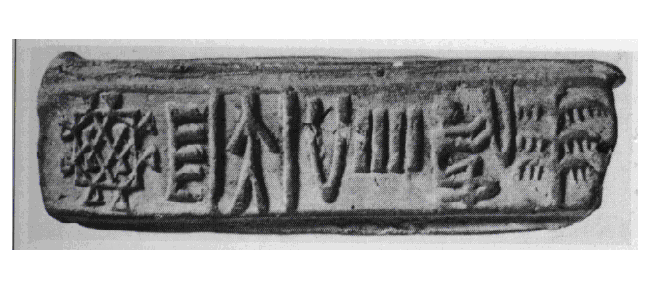 m478a tablet
m478a tablet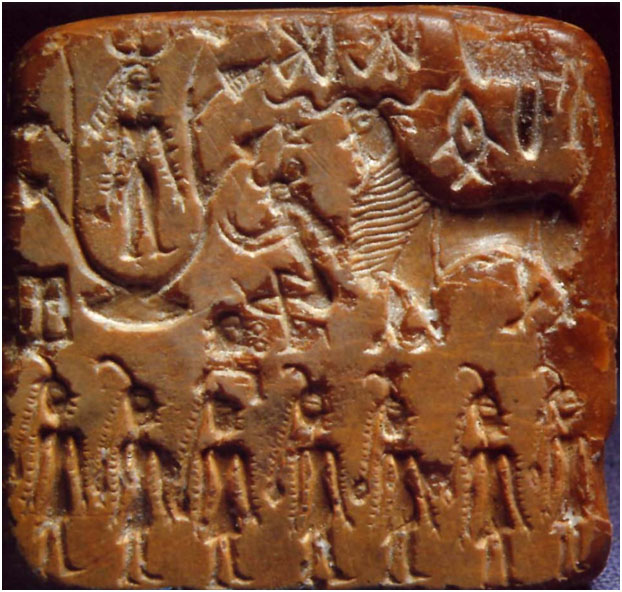 m1186
m1186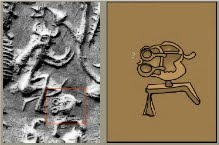


![clip_image062[4]](http://kalyan97.files.wordpress.com/2007/06/clip-image0624-thumb.jpg?w=99&h=45)















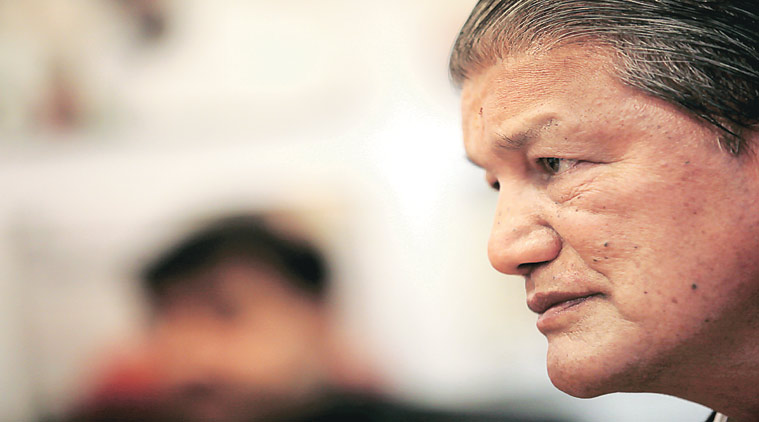 Media reports on Thursday quoted Rawat as having said at an event in Haridwar that those who slaughter cows are the country’s “biggest enemies” and that they had “no right to live in the country”.
Media reports on Thursday quoted Rawat as having said at an event in Haridwar that those who slaughter cows are the country’s “biggest enemies” and that they had “no right to live in the country”.
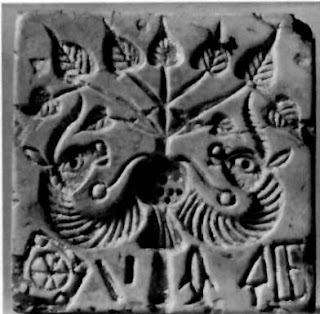










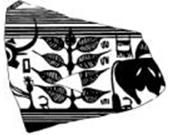



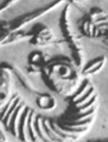














 Ganweriwala ablet
Ganweriwala ablet m1181
m1181 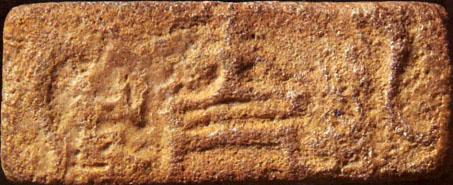 m453
m453




